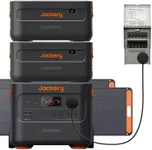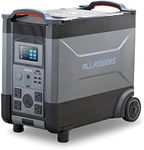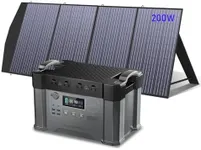Buying Guide for the Best Home Depot Generators
Choosing the right generator for your needs involves understanding the key specifications and how they align with your specific requirements. Generators come in various sizes and capacities, and selecting the right one ensures you have reliable power when you need it. Here are the key specifications to consider when shopping for a generator and how to navigate them.Power Output (Wattage)Power output, measured in watts, indicates how much electricity the generator can produce. This is crucial because it determines what and how many devices you can power simultaneously. Generators typically range from 1,000 watts for small, portable units to over 10,000 watts for larger, standby models. To choose the right one, list the devices you need to power and their wattage requirements. Add them up to find the total wattage needed and select a generator that can handle that load comfortably.
Fuel TypeGenerators can run on various fuel types, including gasoline, propane, diesel, and natural gas. The fuel type affects the generator's run time, maintenance, and availability of fuel. Gasoline is common and easy to find but has a shorter shelf life. Propane is cleaner and has a longer shelf life but requires storage space for tanks. Diesel is efficient and long-lasting but can be more expensive. Natural gas is convenient for home standby generators but requires a connection to a gas line. Choose the fuel type based on availability, storage, and your preference for convenience and maintenance.
Run TimeRun time refers to how long a generator can operate on a full tank of fuel. This is important for planning how often you will need to refuel, especially during extended power outages. Run times can vary from a few hours to over 24 hours, depending on the generator's size and fuel efficiency. Consider how long you need the generator to run continuously and choose one with a run time that meets your needs without frequent refueling.
PortabilityPortability is about how easy it is to move the generator. Portable generators are smaller, lighter, and often come with wheels and handles, making them ideal for camping, tailgating, or temporary power needs. Standby generators are larger, permanently installed units that provide automatic backup power to your home. If you need a generator for on-the-go use, prioritize portability. For home backup power, a standby generator might be more suitable.
Noise LevelNoise level, measured in decibels (dB), indicates how loud the generator will be during operation. This is important for comfort and compliance with local noise regulations. Generators can range from 50 dB (quiet) to over 80 dB (loud). If you plan to use the generator in a residential area or during camping, a quieter model (under 60 dB) is preferable. For construction sites or areas where noise is less of a concern, higher noise levels might be acceptable.
Start TypeGenerators can have different start types, including manual recoil start, electric start, and automatic start. Manual recoil start requires pulling a cord, which can be physically demanding. Electric start uses a battery and is easier to operate with the push of a button. Automatic start is typically found in standby generators and activates automatically during a power outage. Choose the start type based on your preference for ease of use and physical capability.
Outlets and ConnectivityThe number and type of outlets determine what devices you can connect to the generator. Common outlets include standard 120V household outlets, 240V outlets for larger appliances, and USB ports for charging electronics. Some generators also offer connectivity features like Bluetooth or Wi-Fi for remote monitoring. Consider the devices you need to power and ensure the generator has the appropriate outlets and connectivity options to meet your needs.
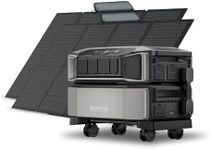
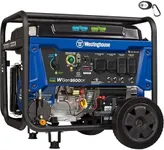

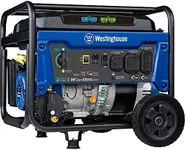

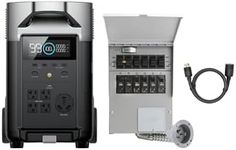
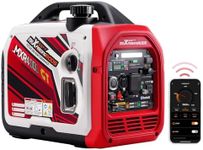
![[Upgraded Version] ALLPOWERS S2000 Portable Power Station 2000W (Peak 4000W) MPPT Solar Generator 1500Wh Backup Battery with 4 AC Outlets for Outdoor Camping RV Emergency Off-Grid](https://images-proxy.bestreviews.guide/RKciUpoEpXP6FG5NDwMBUKV-gKk=/0x150/https://m.media-amazon.com/images/I/51n9OTptdIL._AC_CX679_.jpg)
